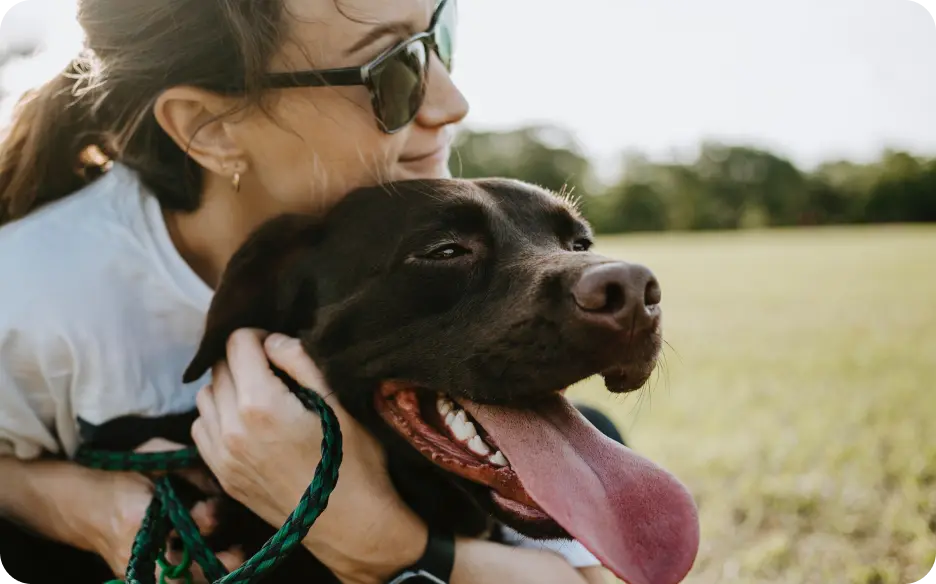Dealing with a dog that bites can be challenging for any pet owner. It’s important to recognize that biting is often a natural behavior for dogs, particularly puppies who are still learning how to interact with their surroundings. However, when biting becomes problematic, it can lead to various issues for both the owner and the dog. Understanding the reasons behind this behavior and applying effective strategies can create a safe and enjoyable environment.
Reasons for Biting
Dogs may bite for numerous reasons, including fear, excitement, or playfulness. Puppies often explore their world through their mouths, making nibbling a common part of their development. As they mature, it is essential for them to learn appropriate behaviors to prevent biting from becoming a habit. Patience and consistency are vital when addressing this issue.
Observing Body Language
One of the first steps in managing biting behavior is to understand your dog’s body language. Signs of discomfort or anxiety, such as tail tucking, growling, or a stiff posture, often precede biting. By being attentive to these cues, you can intervene before a bite occurs. If your dog shows signs of distress around other dogs or people, it may be wise to remove them from the situation, helping to prevent a bite and reduce their stress levels.
Importance of Socialization
Socialization plays a crucial role in teaching dogs how to interact appropriately. Exposing your dog to various environments, people, and animals from an early age helps develop confidence and acceptable behavior. Start with controlled environments where interactions can be closely monitored. Positive reinforcement during gentle interactions reinforces good behavior. For example, rewarding your dog with treats or praise when they play nicely encourages positive experiences.
Managing Playtime
Biting can also become an issue during play, especially with puppies. Many dogs learn to bite while playing, so redirecting this behavior is essential. If your dog nips during tug-of-war or fetch, switch to toys designed for play. Stopping the game immediately when your dog bites sends a clear message that biting leads to the end of fun. Over time, dogs will learn that playtime is enjoyable only when they keep their teeth to themselves.
Training Techniques
Training is vital in managing biting behavior. Teaching commands like “leave it” or “no bite” provides clear guidelines on acceptable behavior. Consistency is critical; use the same commands and tone of voice every time your dog bites to reinforce the message. Enrolling in obedience classes offers a structured learning environment, where professional trainers can provide tailored insights and techniques.
Addressing Fear and Anxiety
If biting stems from fear or anxiety, it’s crucial to address underlying issues. A fearful dog may bite out of self-defense. Creating a safe space for your dog, such as a cozy corner in your home, can help alleviate anxiety. Gradually desensitizing your dog to fear triggers can also be effective. For instance, if loud noises scare your dog, play recordings of those sounds at low volume while offering treats to create positive associations.
Preventing Boredom
Biting can result from a lack of stimulation. Dogs require both mental and physical exercise to prevent boredom, which can lead to destructive behaviors. Adequate exercise, daily walks, and interactive toys keep dogs engaged and reduce the likelihood of biting. Puzzle toys and training exercises can also provide mental stimulation, making biting less likely.
Recognizing Overstimulation
Identifying signs of overstimulation is crucial. Behaviors like excessive barking, rapid tail wagging, or hyperactivity indicate that a dog may be overstimulated. Providing a break during these moments can help prevent biting incidents. Redirecting their energy to more suitable activities, such as fetching a toy or practicing obedience commands, can effectively manage their excitement.
Seeking Professional Help
In more severe cases, consulting a professional dog trainer or animal behaviorist may be necessary. These experts can assess your dog’s behavior and develop a customized plan to address specific needs. Their insights and techniques can lead to significant improvements, especially if the biting is severe or overwhelming.
Building Trust and Consistency
Every dog is unique and may require varying amounts of time and patience to overcome biting behaviors. Consistency in approach, positive reinforcement, and maintaining a calm demeanor contribute significantly to the learning process. Celebrate small victories, as progress can take time.
Creating a positive environment is essential for a dog’s well-being. Ensuring that your dog feels secure and loved fosters better behavior. When a dog refrains from biting or follows commands, rewarding them with praise, treats, or playtime encourages repetition of the desired behavior.
Involving the Family
Involving all family members in the training process enhances consistency. Everyone in the household should understand how to interact with the dog and what behaviors to reinforce. Teaching children to respect the dog’s space and avoid rough play helps prevent biting incidents.
Accidents may happen during the training process. If a bite occurs, remain calm and avoid harsh punishment. Instead, focus on addressing the underlying cause of the behavior. Consulting a veterinarian or behaviorist may be necessary to determine any medical issues contributing to biting.
Patience remains crucial throughout this journey. Dogs may experience setbacks, particularly in new environments or when routines change. Committing to a training plan and responding to your dog with understanding fosters a stronger bond.
Building trust is fundamental to reducing biting behavior. Your dog should feel safe and secure in your presence, knowing you will protect them from perceived threats. The effort to establish this trust leads to a more harmonious relationship.
Many dog owners encounter similar challenges with biting. With dedication and the right approach, positive changes are achievable. Every dog possesses the ability to learn and adapt, becoming a well-mannered companion over time. Addressing biting behavior involves understanding, training, and patience, leading to a more peaceful coexistence where both you and your dog can enjoy each other’s company without fear of biting.



